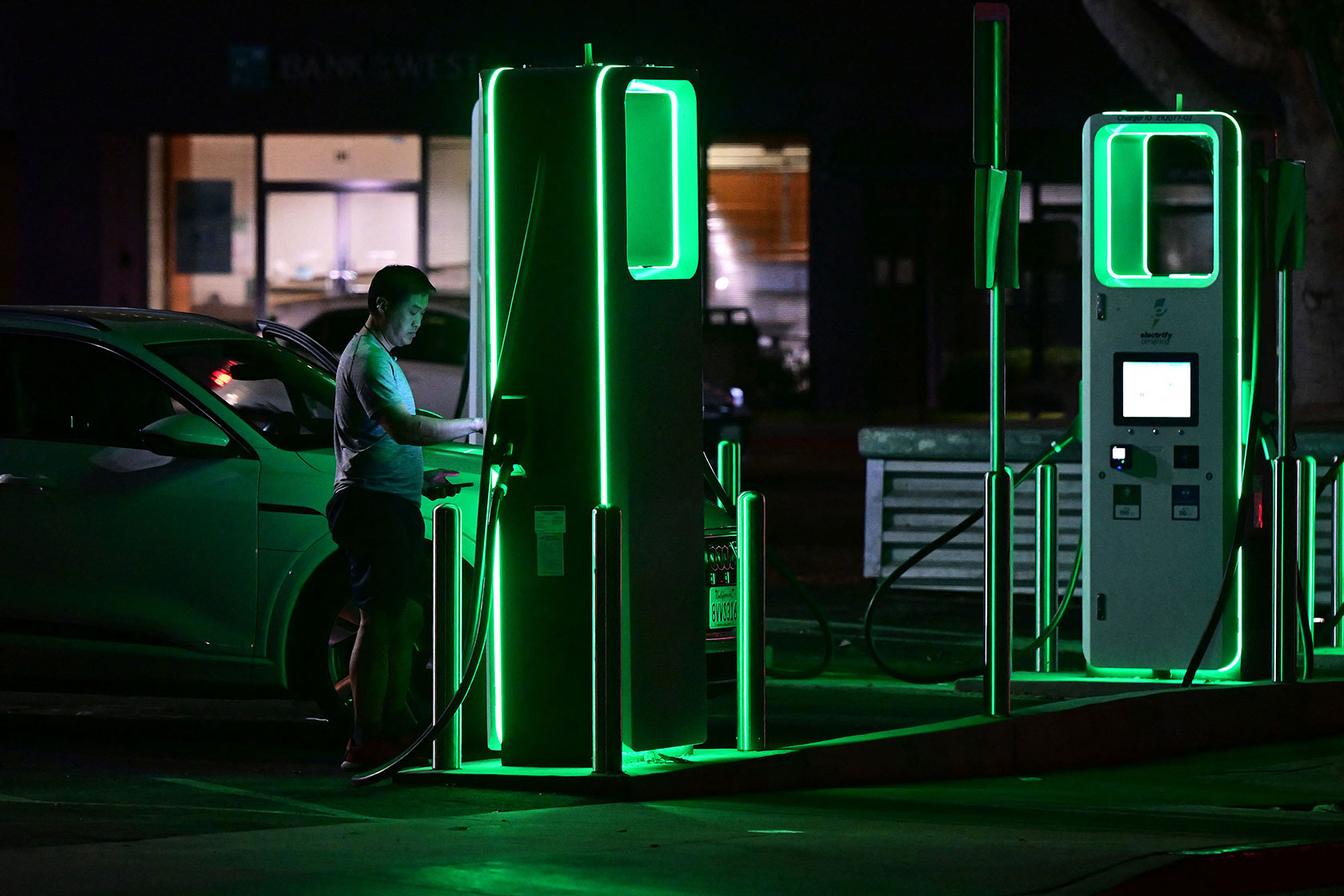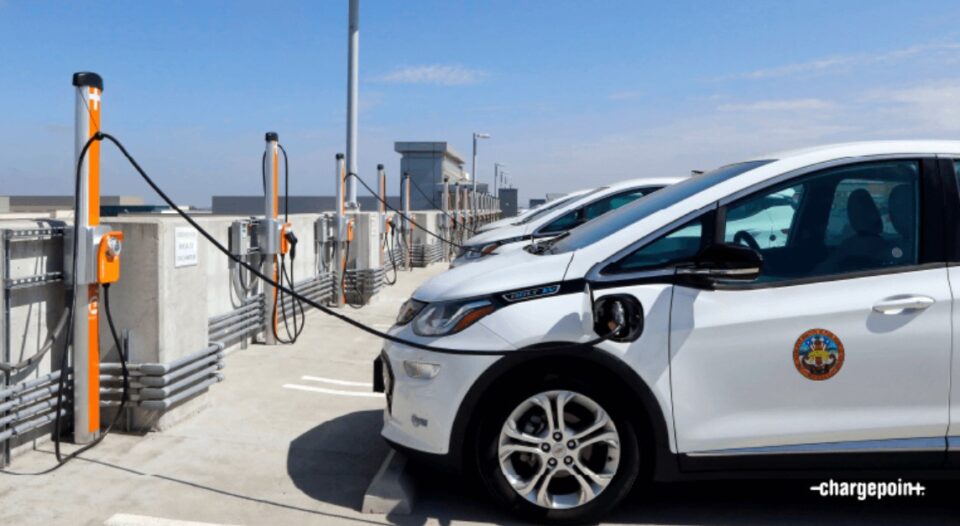Top Reasons Why It’s Essential to Buy EV Charging news Regularly
Top Reasons Why It’s Essential to Buy EV Charging news Regularly
Blog Article
Leading EV Charging Information: Secret Updates on Infrastructure and Technology

Recent Improvements in Fast-Charging Technology

In addition, advancements in battery technology, consisting of improved thermal administration systems and higher power density batteries, complement fast-charging capacities. These advancements minimize the threat of battery degradation during rapid charging, making sure longevity and performance for EV owners.
Additionally, the integration of smart billing remedies is improving user experience, making it possible for real-time monitoring and vibrant rates models. EV Charging news. This flexibility permits motorists to maximize billing expenses and times based on grid demand
As car manufacturers remain to spend in fast-charging networks, the cooperation between sector stakeholders is crucial. Collaborations between charging terminal service providers and vehicle makers are leading the means for comprehensive insurance coverage, eventually fostering a more durable EV community. These innovations are pivotal in supporting the shift to lasting transport.
Government Efforts for Billing Growth
Federal government campaigns play an important duty in the development of electrical automobile (EV) charging facilities, helping with the change to lasting transport. Various government and state programs are being applied to enhance charging availability, lower the financial burden on customers, and promote the fostering of electrical cars.
Especially, the U.S. government has alloted substantial funding through the Facilities Financial Investment and Jobs Act, which earmarks $7.5 billion for EV billing network growth throughout the country. This financing is targeted at releasing thousands of new billing stations, particularly in underserved locations, therefore dealing with variety stress and anxiety amongst prospective EV purchasers.
In addition, numerous states are enacting regulations to streamline the permitting process for billing terminal setups, which is vital for increasing deployment. Incentives such as tax obligation credit scores and rebates for both consumers and companies are likewise being presented to encourage the installment of billing facilities.
Moreover, public-private partnerships are progressively ending up being a focus, leveraging exclusive investment to match government financing. These initiatives underscore a collaborative technique important for building a effective and thorough EV charging network, eventually contributing to a greener and more lasting future.
Innovative Battery Solutions Enhancing Efficiency
Reinventing the landscape of electrical automobile (EV) technology, innovative battery services are substantially boosting effectiveness and efficiency. Advancements in battery chemistry, particularly with lithium-sulfur and solid-state batteries, are resulting in enhanced energy density, which enables longer ranges and faster billing times. These brand-new battery kinds have the potential to surpass conventional lithium-ion batteries by providing greater abilities while lowering weight, thereby boosting general lorry effectiveness.
Additionally, advancements in battery administration systems (BMS) are enhancing energy usage and expanding battery lifespan. Smart formulas keep an eye on battery wellness and performance, making it possible for real-time adjustments to billing and releasing procedures. This not just improves the efficiency of the battery yet also ensures an extra reliable and lasting power source for EVs.
In addition, the integration of reusing technologies is dealing with the environmental influence of battery manufacturing and disposal. Developments in second-life applications for EV batteries are promoting their usage in energy storage space systems, adding to a round economy.
As these cutting-edge battery solutions remain to progress, they assure to transform the EV market, making electric cars much more available and attractive to a broader audience while sustaining global sustainability goals.

Cooperation In Between Automakers and Charging Networks
Identifying the crucial need for a robust billing framework, car manufacturers are significantly teaming up with charging network providers to boost the EV ownership experience (EV Charging news). These partnerships intend to produce a seamless charging community that profits consumers and sustains the change to electrical vehicles
Major automobile brands are signing up with forces with well established charging networks to expand their charging station insurance coverage, making certain motorists have accessibility to dependable and hassle-free billing choices. Collaborations with networks like ChargePoint and Electrify America enable car manufacturers to incorporate billing options directly into their cars' navigation systems, directing users to the nearby terminals and supplying real-time availability updates.
Additionally, these collaborations frequently cause the advancement of fast-charging innovations that significantly reduce the moment needed to reenergize an EV. By pooling resources and proficiency, car manufacturers and charging networks can introduce quicker, producing services that fulfill the expanding need for electric wheelchair.
Additionally, joint initiatives may likewise lead to more standard billing procedures, which can ease customer complication Full Report and advertise wider EV adoption. Generally, these calculated partnerships are critical in developing a user-friendly and effective charging infrastructure that satisfies the requirements of an expanding electrical my response vehicle market.
Difficulties Encountering EV Billing Framework
As the electric lorry market proceeds to grow, numerous challenges are appearing that prevent the development of an extensive billing facilities. Among the key challenges is the insufficient variety of billing terminals, specifically in underserved and country city locations. This gap produces array anxiousness among possible EV buyers, preventing them from making the switch.
In addition, the lack of standardization accountable innovation makes complex the framework landscape. Variants in plug types and billing speeds can create confusion for individuals and raise functional complexities for charging network drivers. The integration of billing stations into existing electric grids postures considerable obstacles. Many regions encounter capacity restrictions, requiring significant investments in grid upgrades to suit boosted need.
Another pushing concern is the high cost related to the installment and upkeep of charging terminals, which can be an obstacle for both public entities and private services. Governing obstacles and zoning constraints can postpone the release of billing facilities, hampering progress in expanding crucial solutions. Addressing these obstacles will be essential for cultivating a robust EV environment that sustains the transition to lasting transportation.
Final Thought
To conclude, the recurring advancements in EV billing innovation, supported by significant government campaigns and cutting-edge battery options, are vital for the development and effectiveness of electrical vehicle framework. Cooperations between car manufacturers and charging providers better improve station insurance coverage, dealing with the expanding demand for easily accessible billing alternatives. In spite of difficulties that persist within the EV billing landscape, these developments signify a favorable trajectory in the direction of a more lasting and effective electric car community.
Developments anchor in billing framework have led to the development of ultra-fast battery chargers capable of delivering up to 350 kW of power, dramatically reducing charging times. Variants in plug kinds and billing speeds can create complication for users and increase operational intricacies for charging network operators.In final thought, the recurring innovations in EV charging technology, supported by significant federal government efforts and ingenious battery remedies, are important for the development and efficiency of electric automobile infrastructure. Partnerships in between car manufacturers and billing service providers additionally enhance terminal insurance coverage, attending to the growing demand for obtainable billing choices. In spite of difficulties that linger within the EV charging landscape, these advancements signify a favorable trajectory in the direction of an extra lasting and effective electric lorry community.
Report this page